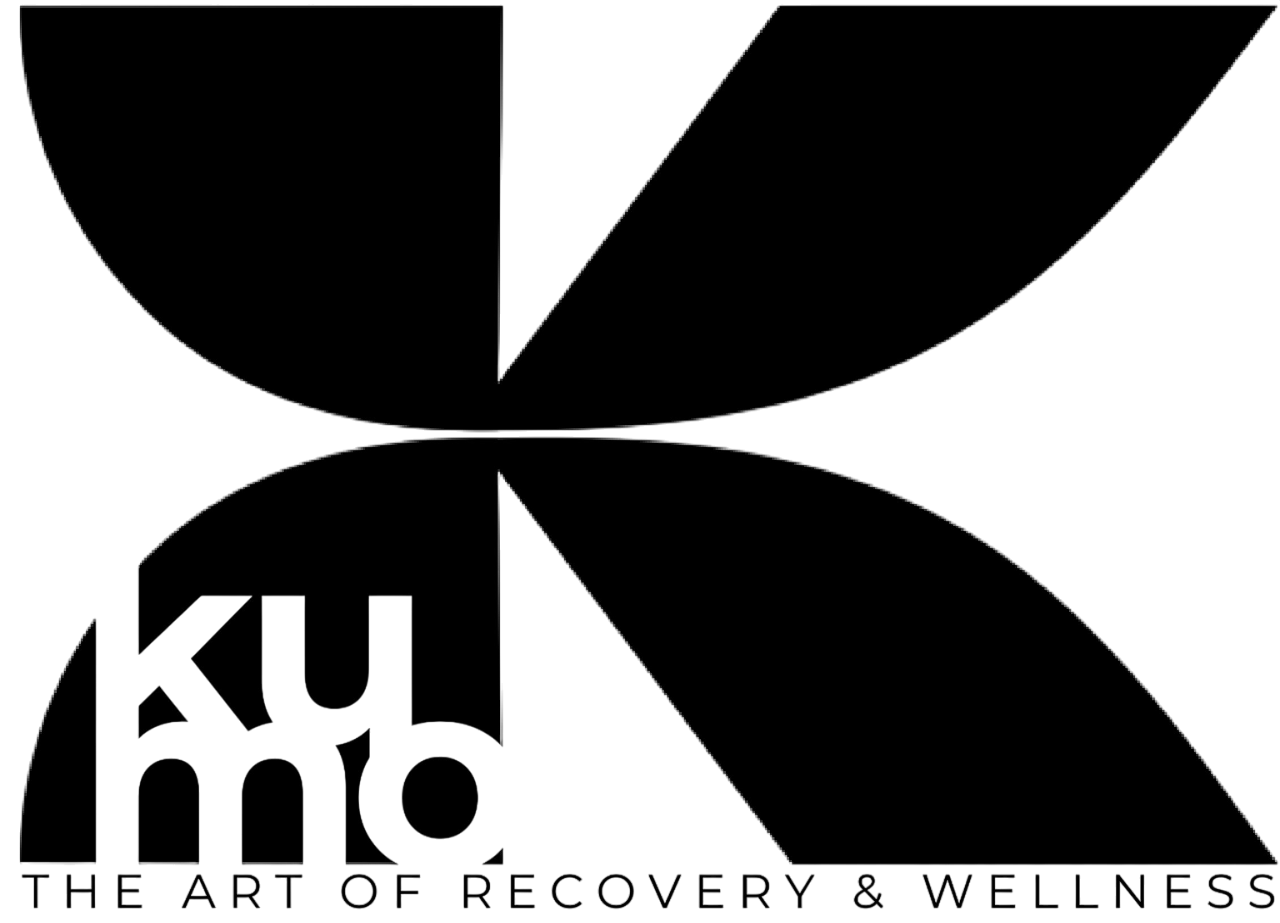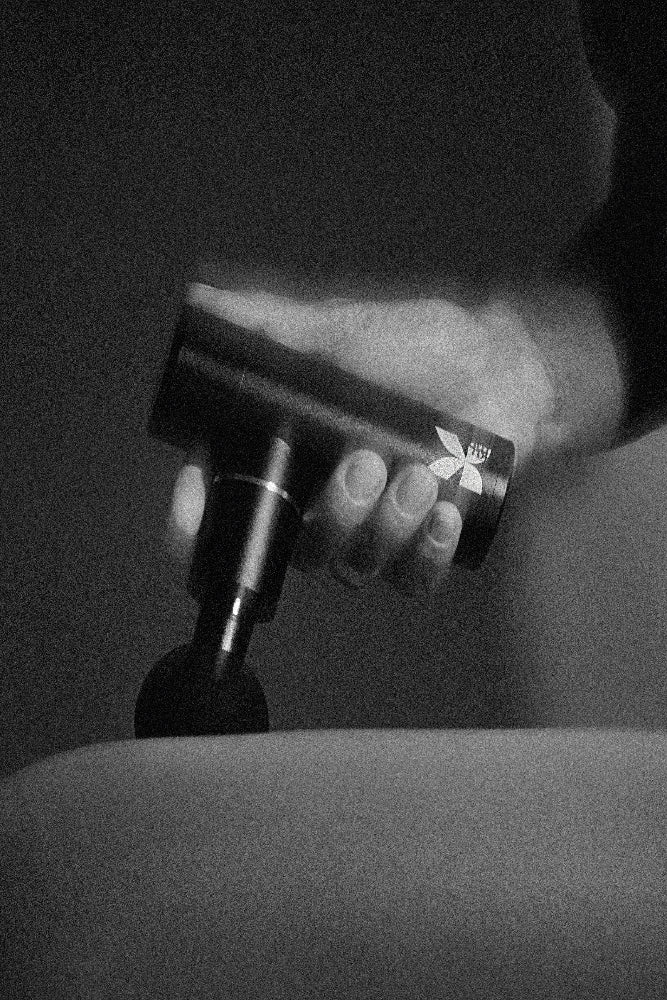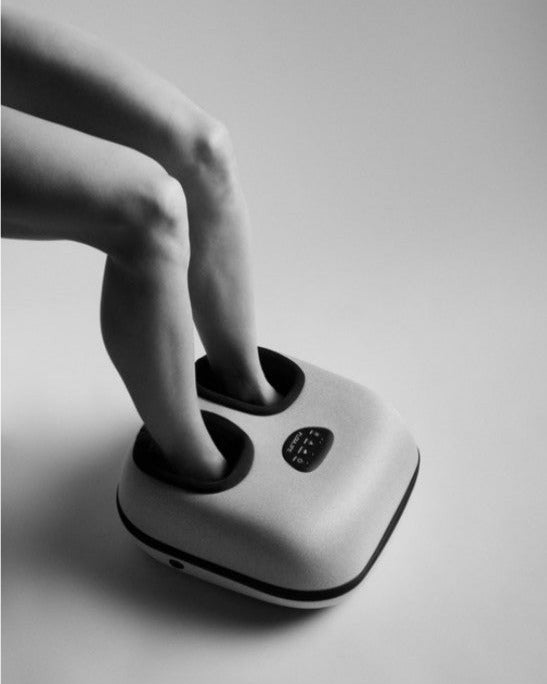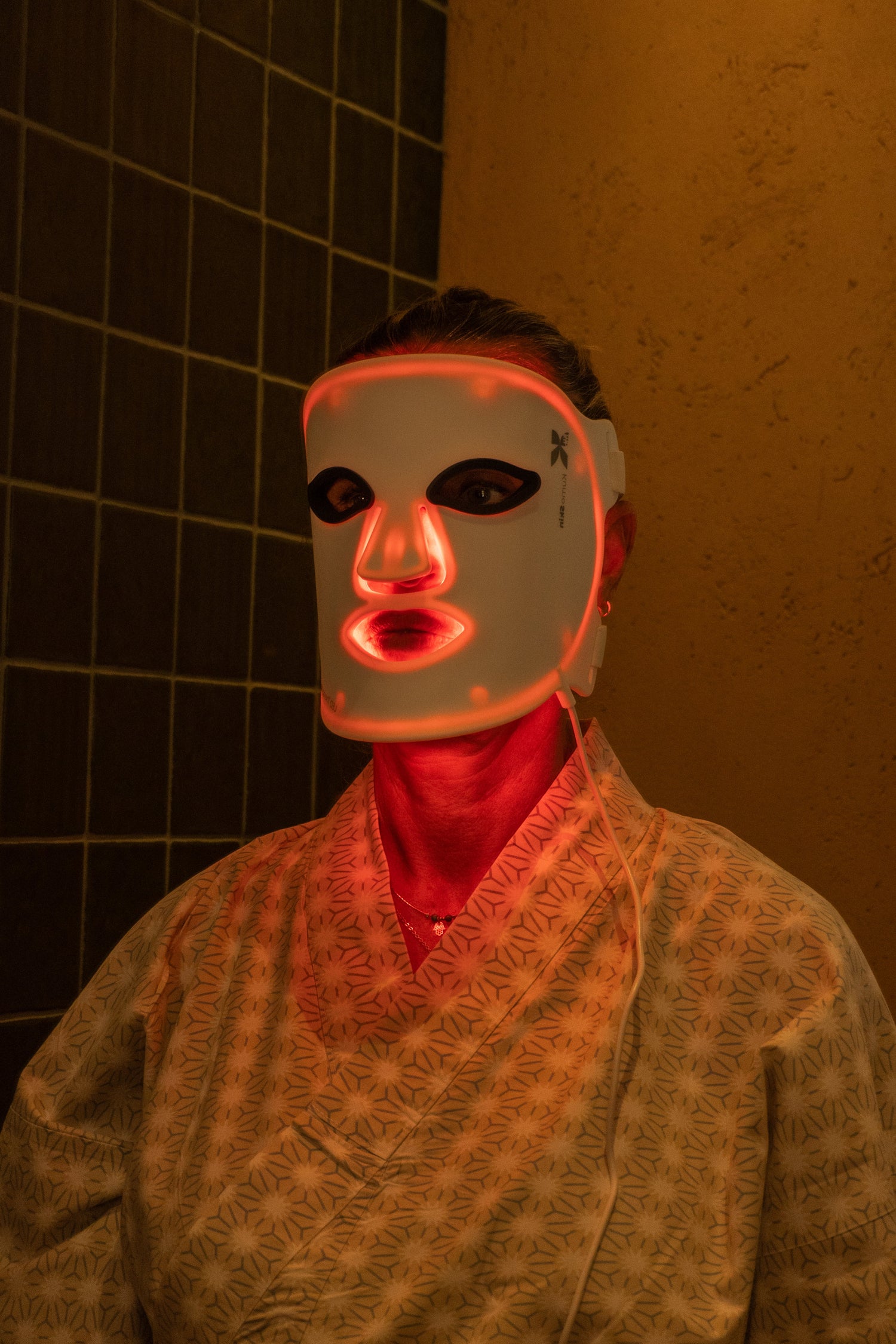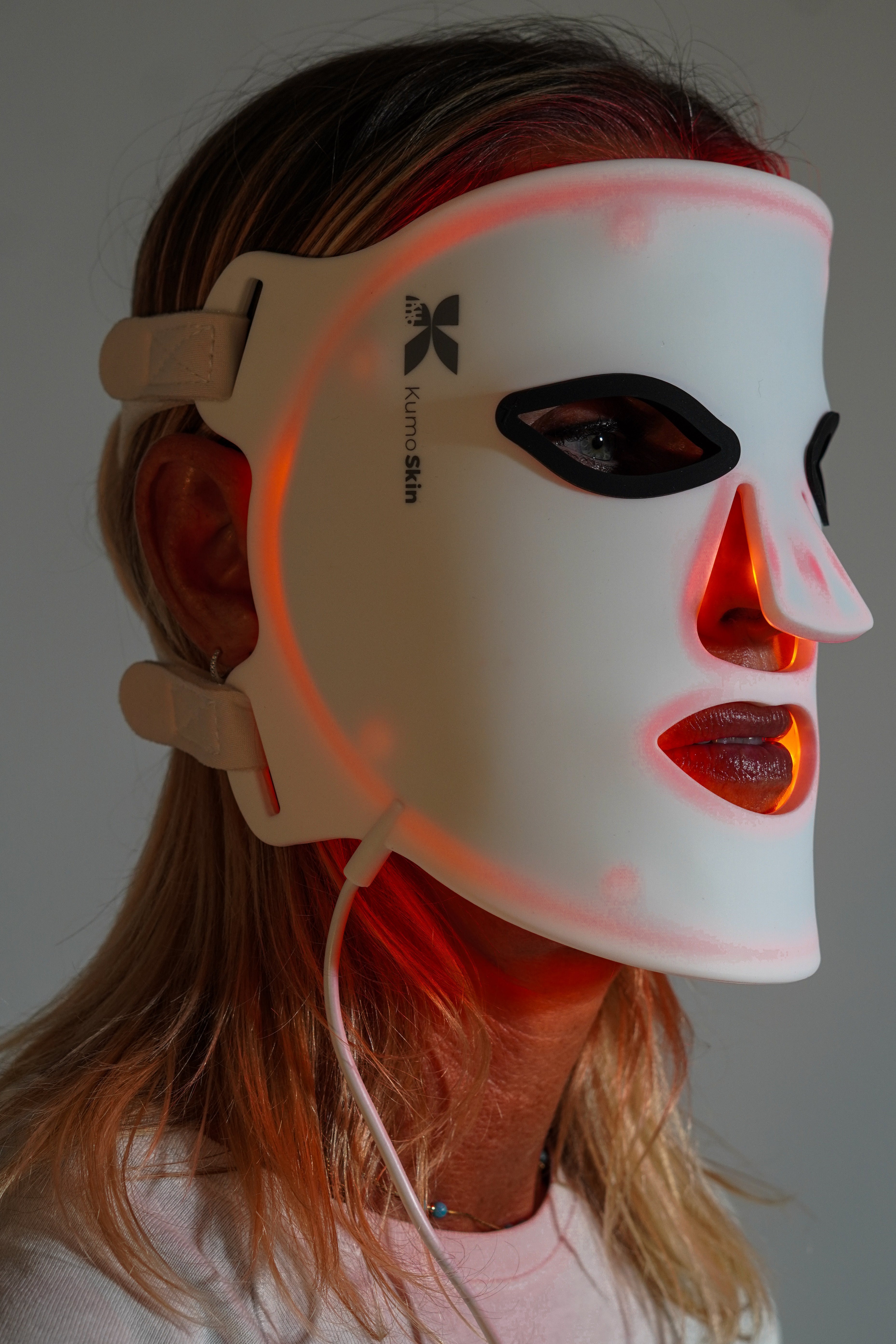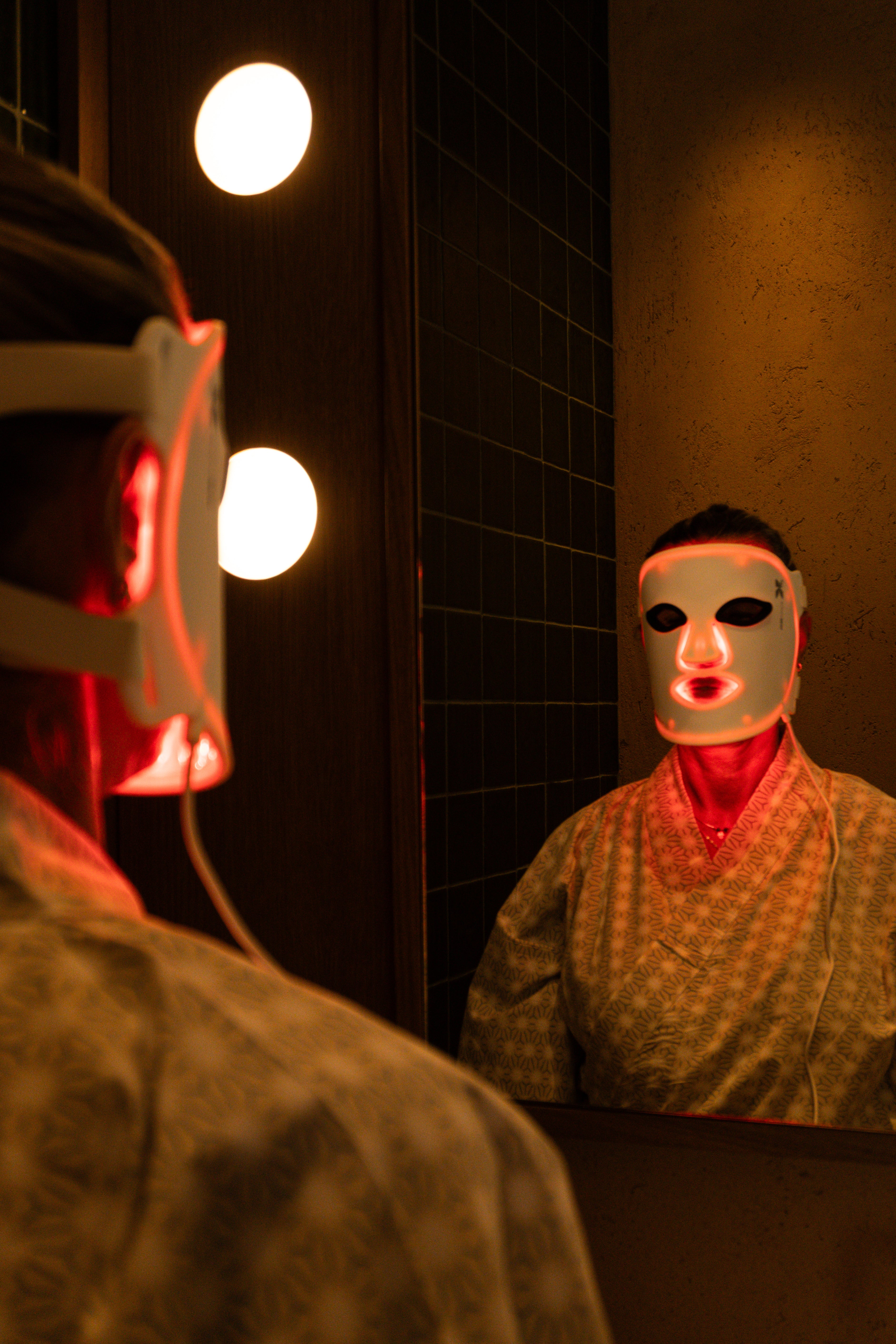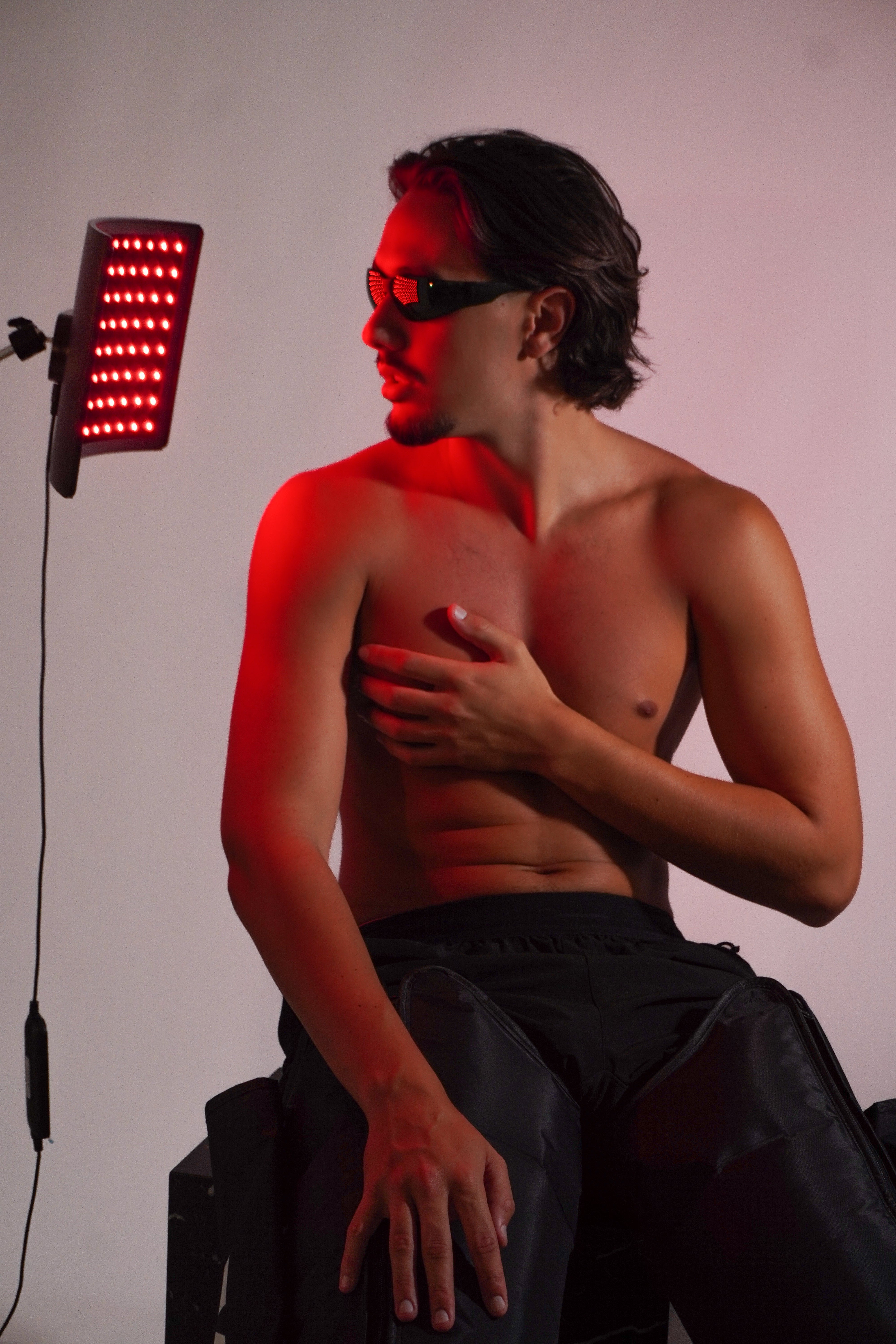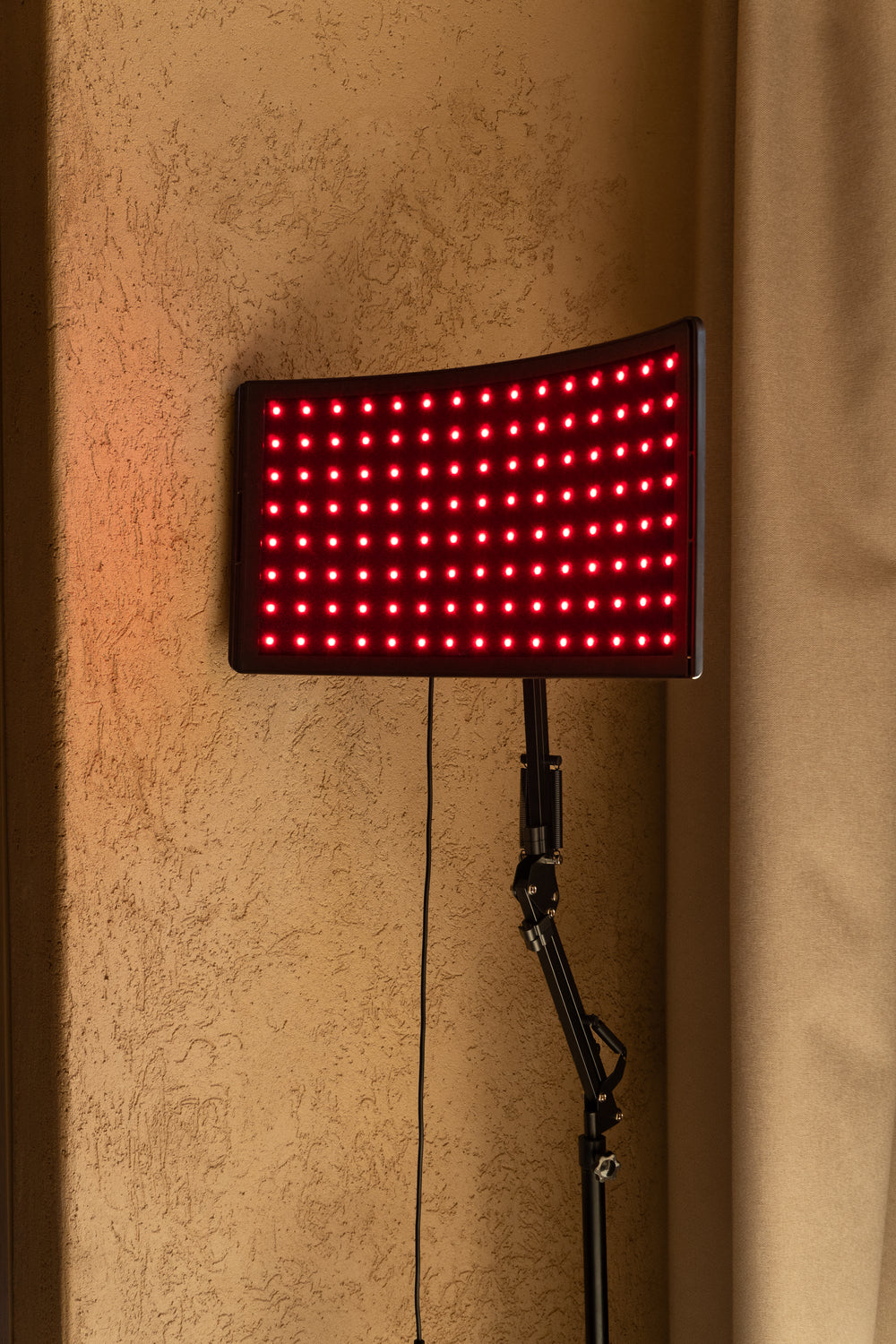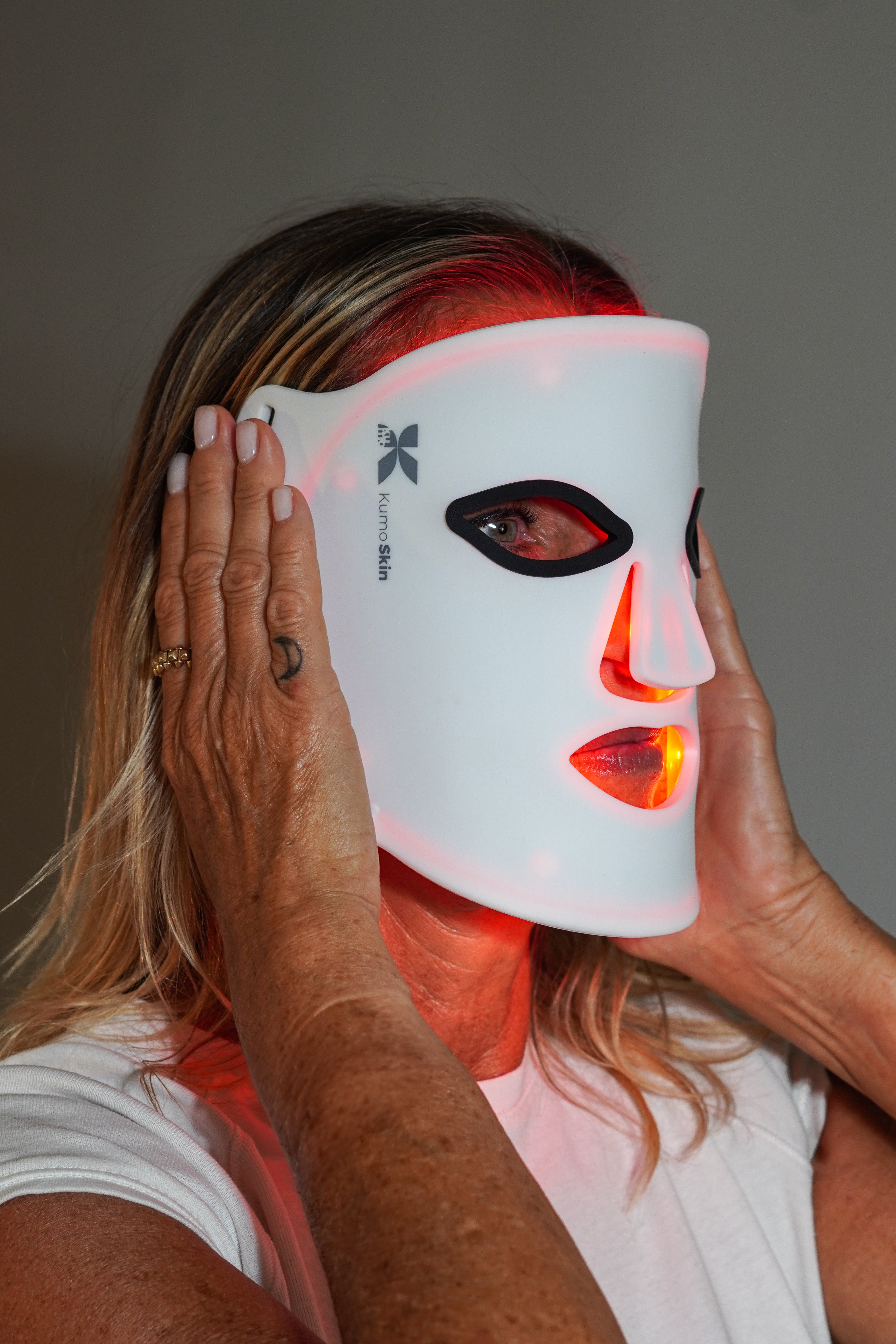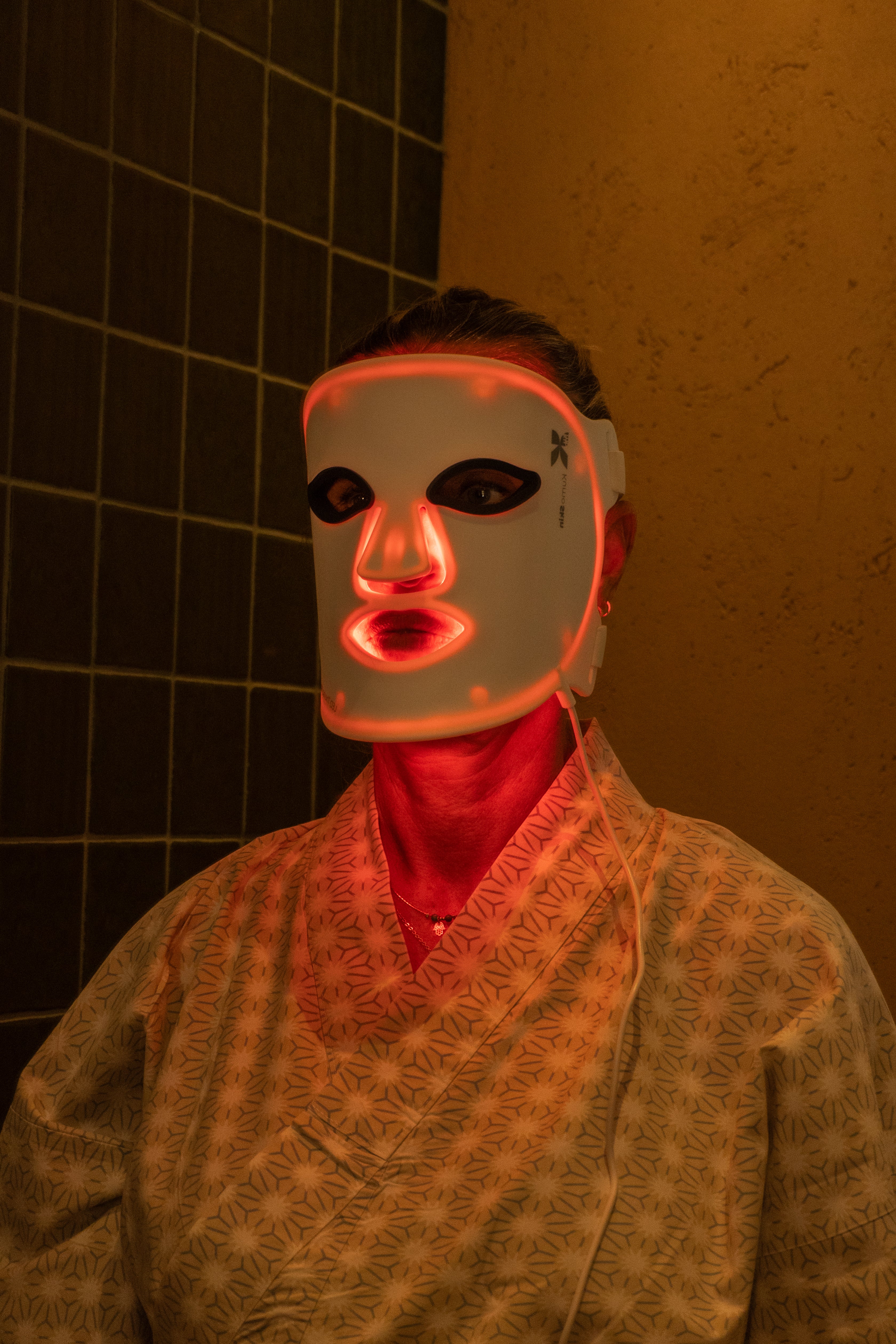LED facial mask: colors, how they work, and their real-life effects on your skin. If you're looking to understand what each color does, what results to expect, and how to use your mask safely and effectively, here's a clear, evidence-based, and ready-to-use guide.
Coming soon
- Red and near-infrared light stimulate collagen and aid tissue repair.
- Blue light acts on acne by affecting the porphyrins of Cutibacterium acnes.
- Green and amber may help with tone and redness, with emerging evidence.
- 10–20 minutes, 3–5 times per week, for 6–8 weeks is the typical guideline.
- It's safe for most skin types; avoid use if you're taking photosensitizing medications and wear eye protection.
How LED Facial Therapy Works
Light-emitting diode (LED) phototherapy emits specific wavelengths that trigger biological processes without heat or damage. In simple terms, certain red/infrared lights stimulate ATP production in mitochondria and activate fibroblasts, promoting collagen and elastin; blue light interacts with bacterial porphyrins, reducing acne.
Clinical evidence supports specific uses: non-ablative rejuvenation, mild to moderate improvement of fine wrinkles, and control of mild to moderate acne (based on Cochrane reviews and dermatological literature). It is not a laser, and it does not exfoliate or peel the skin; its action is cumulative and requires consistency.
Tip: Think of LED as short, consistent “workouts” for your skin, not a one-time miracle treatment.
Mask colors and their effects
Red (≈ 620–660 nm)
- Objective: collagen stimulation, fine line reduction, healing support.
- How it works: photobiomodulation on mitochondria, increased ATP synthesis and pro-repair cell signaling.
- For whom: skin with first wrinkles, loss of firmness, recovery after non-ablative procedures (if approved by your dermatologist).
- Notes: Well tolerated by most skin types; gradual results.
Near infrared or NIR (≈ 810–850/940 nm)
- Objective: Deeper penetration, anti-inflammatory support, tissue recovery.
- How it works: Similar to red light, but with greater reach into the dermis; it can help with sensitivity and inflammation.
- For whom: mature skin, recovery and comfort after facial training (bruxism, tension), support for skin renewal.
- Notes: Not visible to the naked eye, but key in advanced masks.
Blue (≈ 405–470 nm)
- Target: mild to moderate acne, papules and pustules.
- How it works: It interacts with bacterial porphyrins producing reactive oxygen species that decrease C. acnes.
- Who it's for: Skin prone to breakouts; useful as a complement to your acne routine.
- Notes: May be drying; follow with non-comedogenic moisturizers. Caution with photosensitivity and active melasma.
Green (≈ 515–525 nm)
- Objective: to support uneven tone and post-inflammatory hyperpigmentation.
- How it works: Its modulation of melanogenesis and tone uniformity is being investigated.
- For whom: skin with diffuse spots or residual redness.
- Notes: Emerging evidence; daily sun protection is essential.
Amber/Yellow (≈ 580–590 nm)
- Objective: to calm redness and improve luminosity.
- How it works: It can modulate superficial vascular responses and inflammation.
- For whom: reactive skin or skin with mild redness.
- Notes: Data are still limited; useful as an adjunct, not the sole treatment.
Purple, white and other combined modes
- Purple is usually a mixture of red and blue to treat acne and marks at the same time.
- White and multi-color “cycles” are mixing modes; their effectiveness depends on the effective time under each wavelength.
- Prioritize equipment that indicates actual wavelengths and power density, rather than color names.
Quick reference table
| Color | Approx. wavelength | Main objective |
|---|---|---|
| Red | 620–660 nm | Collagen, fine lines, repair |
| Near infrared | 810–850/940 nm | Anti-inflammatory, deep recovery |
| Blue | 405–470 nm | Acne (C. acnes) |
| Green | 515–525 nm | Uneven tone, mild PIH |
| Amber/Yellow | 580–590 nm | Redness and skin discomfort |
Sources for further information: review on photobiomodulation and cellular mechanisms (NCBI, 2016) [https://www.ncbi.nlm.nih.gov/pmc/articles/PMC5523874/], clinical overview of LED in dermatology (DermNet NZ) [https://dermnetnz.org/topics/led-phototherapy], and Cochrane review on light therapies for acne (2016) [https://www.cochranelibrary.com/cdsr/doi/10.1002/14651858.CD007917.pub2/full].
How to choose and use an LED mask
Safety and contraindications
- Suitable for most skin types; always use the included eye protection.
- Avoid use if you are taking photosensitizing medications (e.g., certain antibiotics), recently started taking isotretinoin, or if you have photosensitive epilepsy. Consult your dermatologist if you are pregnant, have active melasma, or have complex skin conditions.
- LED light is not UV or tanning, but treated skin should be protected with SPF.
For a holistic approach to wellness and recovery, explore how KUMO cares for your skin and performance in KUMO Balance .
Recommended usage routine
- Frequency: 3–5 times per week.
- Duration: 10–20 minutes per session (according to the device manual).
- Cycle: 6–8 weeks to assess response; maintenance 1–3 times per week.
- Preparation: Clean skin; avoid strong acids just before applying sunscreen. Apply SPF in the morning if you're using sunscreen early in the morning.
- Log: Take monthly photos to monitor realistic progress.
Combine with your routine and enhance results
- Compatible ingredients: niacinamide, panthenol, peptides and hyaluronic acid before or after the session.
- Avoid: Retinoids or AHA/BHAs just before LED if they irritate you; you can apply them the night before.
- Rest and circulation are important: red light therapy also contributes to recovery and restful sleep; discover our LED light therapy .
360° Recovery: Skin, Muscles and Circulation
If your goal is performance and overall well-being, complement your facial care with:
- Circulatory activation with pressotherapy for light legs.
- Myofascial release with a percussion massage gun to release tension and promote recovery.
Myths and realities
- “It burns the skin”: False. LED is cold, non-ablative light; it doesn’t destroy tissue.
- “It replaces a dermatologist”: no. It's a complement; severe acne, melasma, or moderate-severe rosacea require a diagnosis and medical plan.
- “More time is better”: no. Respect the time; too much time doesn't improve results and can be irritating.
- “All masks are created equal”: The importance of verifiable wavelengths and power, and safe design.
Golden rule: consistency + realistic expectations + sun protection = better results.
FAQ
What color of light is best for wrinkles and firmness?
Red light (≈630–660 nm) and near-infrared light (≈810–850/940 nm) are the most studied for improving texture, fine lines, and firmness, thanks to fibroblast activation and mitochondrial photobiomodulation. In practice, many masks combine both to act at different depths. Changes are gradual: improvements in radiance and smoothness are usually seen after 4–8 weeks of consistent use. Complement with hydration, peptides/retinoids on alternate days, and daily sun protection to sustain progress.
How long does it take to notice improvement with an LED mask?
It depends on the goal and consistency. With mild acne, some people see less inflammation in 2–4 weeks. For texture, radiance, and fine lines, most people need 6–8 weeks of 3–5 weekly sessions for noticeable changes. Response varies by age, habits (sleep, stress), and topical routine. Document with monthly photos and adjust expectations: LED adds subtle and cumulative benefits; it doesn't replace medical procedures when necessary.
Can blue light worsen dark spots or melasma?
Blue light is useful for acne, but it may not be ideal for skin with melasma or persistent hyperpigmentation, as certain visible wavelengths can influence pigmentation in susceptible skin. If you have active melasma, prioritize red/NIR light and consult a dermatologist before using blue light. Regardless of the color, daily broad-spectrum sunscreen is essential to prevent worsening and maintain results.
Can I use the LED mask if I am pregnant or have rosacea?
During pregnancy, many dermatologists consider low-power LEDs a low-risk option, but the evidence is limited; it's prudent to consult with your doctor before starting. For rosacea, soft amber/red light can help soothe the condition, but each skin reacts differently. Start with short durations, protect your eyes, and avoid triggers (heat, irritating alcohols). If you experience active flare-ups or pustules, seek dermatological advice.
To take into account
- Red/NIR light promotes collagen and repair; blue light targets acne.
- Green and amber may support tone and redness, with evidence still developing.
- Consistency (3–5 times/week, 6–8 weeks) is key to noticing changes.
- Always wear eye protection and SPF; avoid if you are taking photosensitive medications.
- Integrates LED into comprehensive care: rest, circulation, and muscle relaxation.
- Ready to take the plunge? Explore the KUMO LED light therapy either contact our team for personalized guidance from KUMO Balance .
